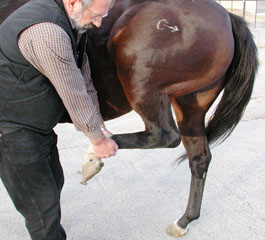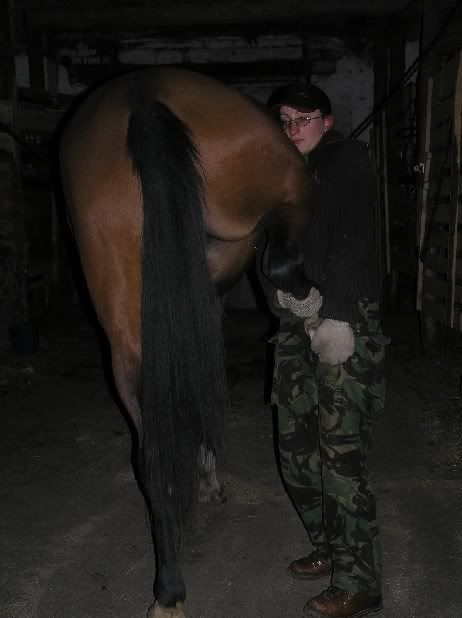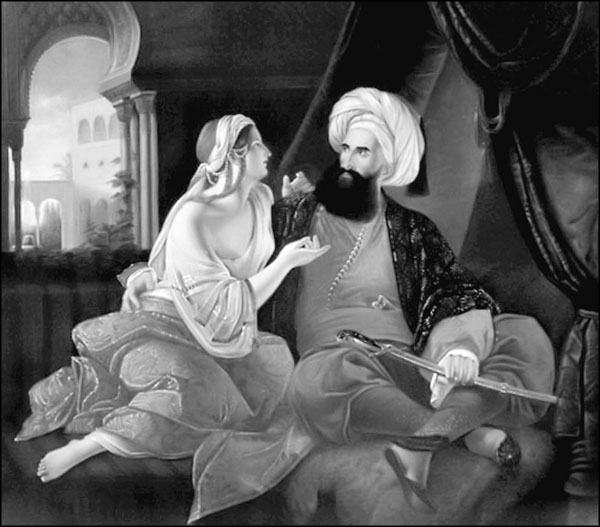Я тут нашла целую программу как это делать - делюсь, если кому нибудь пригодится
Упражнения для исправления верхней фиксации коленной чашечки
The Physical Therapy Program
“This program is owner- and horse-intensive in terms of time and energy for successful outcomes,” she continued. “After the equine is symptom-free, a cross-training maintenance program should be used to prevent recurrence.”
1: Horse Owner Education
Affected horses need more movement, not less (unless your veterinarian prescribes stall rest). Keep horses moving throughout the day, Brooks recommended, allowing 24-hour turnout (but with access to shelter), ideally in a large pasture with slight hills. Have a companion animal, horse, or pony to maximize the herd instinct, and provide multiple separated feed piles to keep horses moving around the paddock. Your veterinarian can help manage any pain your horse might have.
“Often, the horse with stifle problems will opt to rest the involved or atrophied limb frequently,” Brooks noted. “This rest allows or feeds into the commonly known adage in physical therapy that the weak get weaker, further facilitating the problem of nonuse of the weaker limb.”
2: Stretching ("Flexibility should be assessed by a professional and instruction of proper stretching techniques should be provided again by a licensed qualified physical therapist," Brooks stressed.)
- High flexion: Bring the limb up passively into a fully flexed hip and stifle position and hold for 10-30 seconds.
- Protraction: Bring the limb forward under the horse’s belly.
- Retraction: Stretch the limb backward past the tail.
- Adduction: Stretch the hind limb toward the midline under the horse’s belly.
3: Strengthening
Strengthening starts with isometric exercise, which involves contracting or tightening a muscle without moving the limb (like if you push on a wall but remain still). Effective isometric muscle contractions are held for at least six seconds.
- Lateral tail pull: Stand to the side of the horse, grasp the tail at mid-length, and gently pull the horse’s pelvis over the involved hind limb. The horse does not need to be standing square.
Next step:
- Single leg standing. Pick up the opposite hind limb as if to pick out the hoof. Don’t let the horse rest his weight on you; make him stand on his involved limb for 10-30 seconds or more.
After about a week of this, many owners notice improvement of the horse’s tolerance of lateral tail pull and stretching, Brooks reported. The next step is isotonic (dynamic) exercise, including the following:
- Hand-walking with impulsion from the hind end so that the hind feet track into the forelimb hoof prints (owner might need training to make the horse walk forward with impulsion). This should be done before passive stretching exercises to warm up soft tissues. Increase load as tolerated with a rider’s weight, walking through water or snow, pulling a carriage, etc.
- If the horse is tolerating the progression, backing in hand comes next. Focus on good stride quality.
- Hand-walking up and down slight inclines.
- Varying the surface the horse walks on (sand, chips, gravel, etc.).
- After about two successful weeks, beginning walk-to-trot and trot-to-walk transitions in hand with quality long strides behind.
- Later exercises include turning on the forehand, backing up and down hills, completing long line work, navigating ground poles, and performing these exercises on hills.
If patellar fixation signs have decreased and no lameness is present after about eight weeks of therapy, riding may begin with a slow progression of conditioning through walk, trot, and canter. Maintain strength gains and soundness with a vigorous cross-training program, using a variety of these exercise regimens three to four times a week, Brooks advised.
Most horses have responded favorably to this program when owner compliance was achieved, she said.
“Consider equine physical therapy in conjunction with veterinary medicine approaches for optimal outcomes after injury or during recovery from systemic diseases and surgeries,” she concluded.








, это, как я понимаю, был для Герцога наиболее предпочтительный вариант.



